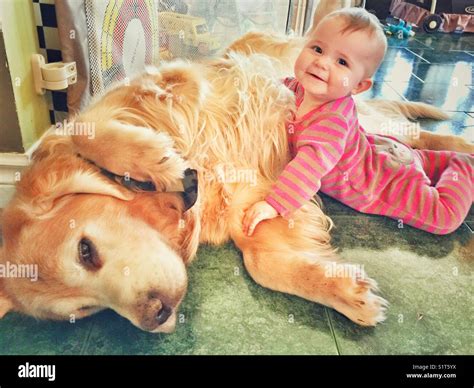
A stray dog in Texas is being hailed as a hero after surveillance footage captured her fending off five coyotes attempting to attack her near a resident’s home, a display of courage that has resonated with audiences globally.
Surveillance video captured in a Texas neighborhood shows a stray dog bravely confronting five coyotes, protecting the area around a house, an act that has touched hearts worldwide. The incident, which occurred on a residential property, showcases the dog’s protective instincts and unwavering resolve against overwhelming odds. The footage quickly went viral, turning the canine into an overnight sensation and sparking widespread admiration for her bravery.
The incident occurred in a neighborhood in Texas, where residents have been increasingly concerned about the presence of coyotes. According to the homeowner whose surveillance camera recorded the encounter, the dog, a stray, had been seen wandering around the area for some time. “We’ve seen her around, just doing her thing, minding her own business,” the resident stated. “But we never expected to see something like this.”
The video shows the dog initially relaxing near the property when the five coyotes emerge from a nearby wooded area. Almost immediately, the coyotes begin to encircle her, displaying predatory behavior. Undeterred, the dog stands her ground, barking fiercely and maneuvering to keep the pack at bay. The confrontation lasts for several intense minutes, during which the dog manages to fend off multiple attempts by the coyotes to close in.
“She was fearless,” the homeowner recounted. “You could see it in her eyes. She wasn’t going to back down, no matter what.”
The video’s circulation on social media platforms has elicited an outpouring of support and admiration. Users from around the world have praised the dog’s bravery, with many calling for her to be adopted and given a safe and loving home. Animal rescue organizations have also taken notice, with several groups expressing interest in locating the dog and providing her with necessary care.
“This dog’s courage is a testament to the resilience and protective nature of animals,” said a spokesperson for a local animal shelter. “We are committed to finding her and ensuring she receives the love and care she deserves.”
The incident also highlights the increasing interactions between wildlife and humans in urban and suburban areas. As residential developments expand into natural habitats, encounters with animals like coyotes become more frequent, raising concerns about safety and the need for coexistence strategies.
“It’s important for people to be aware of their surroundings and take precautions to protect themselves and their pets,” advised a wildlife expert. “This includes keeping pets indoors at night, securing garbage cans, and avoiding feeding wildlife.”
Authorities are urging residents to report any sightings of aggressive or unusual animal behavior to local animal control agencies. They also recommend educating children about wildlife safety and taking steps to minimize potential conflicts.
The stray dog’s bravery serves as a reminder of the often-unseen acts of courage displayed by animals and the importance of respecting and protecting their well-being. As the search for the heroic canine continues, many hope that she will soon find a permanent home where she can live safely and be appreciated for her remarkable spirit.
Expanding on the Incident and its Impact:
The video, capturing the tense standoff between the lone dog and the group of coyotes, quickly went viral on platforms such as X (formerly Twitter), Facebook, Instagram, and TikTok. Users expressed a range of emotions, from shock and concern to admiration and relief. Many commended the dog’s bravery, using words like “heroic,” “fearless,” and “amazing” to describe her actions. Some users shared similar stories of animal encounters in their neighborhoods, underscoring the growing issue of wildlife interactions in residential areas.
Animal welfare organizations and rescue groups have amplified the video, using it as an opportunity to raise awareness about the plight of stray animals and the importance of responsible pet ownership. They have also emphasized the need for community support in rescuing and rehoming animals in need.
The outpouring of support has not been limited to online platforms. Local news outlets have covered the story extensively, interviewing the homeowner who captured the video and speaking with animal experts about the incident. The story has also gained national and international attention, with news organizations around the world reporting on the brave dog from Texas.
Expert Opinions and Wildlife Considerations:
Wildlife experts have offered insights into the behavior of coyotes and the potential reasons for the encounter. Coyotes are opportunistic predators that typically hunt small animals such as rodents, rabbits, and birds. However, they may also prey on larger animals, including domestic pets, especially when food is scarce.
“Coyotes are highly adaptable animals that can thrive in a variety of environments, including urban and suburban areas,” explained Dr. Emily Carter, a wildlife biologist. “They are often drawn to residential areas in search of food and shelter.”
Dr. Carter added that the presence of multiple coyotes suggests that they may be part of a pack, which typically consists of a breeding pair and their offspring. Packs often work together to hunt and defend their territory.
“In this case, the coyotes may have perceived the dog as a threat to their territory or a potential source of food,” Dr. Carter said. “Their behavior is consistent with their natural instincts.”
Experts advise residents to take precautions to minimize the risk of coyote encounters, such as keeping pets indoors, especially at night; securing garbage cans and compost bins; and removing potential food sources from their yards. They also recommend avoiding direct interactions with coyotes and reporting any aggressive behavior to local authorities.
Community Response and Rescue Efforts:
The community in Texas has rallied together to locate the stray dog and provide her with assistance. Volunteers have organized search parties, distributing flyers with the dog’s picture and information. Local animal shelters and rescue groups have offered to provide medical care, shelter, and adoption services.
“We are committed to finding this brave dog and giving her the loving home she deserves,” said Sarah Johnson, the director of a local animal shelter. “She has shown incredible courage and resilience, and we want to make sure she is safe and well cared for.”
The homeowner who captured the video has also been actively involved in the search, working with neighbors and local organizations to spread the word. “We feel a responsibility to help this dog after what she did,” the homeowner said. “She protected our property, and now we want to protect her.”
As of the latest reports, the dog has not yet been found, but the search efforts are ongoing. The community remains hopeful that she will be located soon and that she will receive the care and attention she needs.
Legal and Ethical Considerations:
The incident also raises important legal and ethical considerations regarding the treatment of stray animals and the management of wildlife in urban areas. Many communities have laws in place to protect stray animals and ensure their welfare. These laws may include provisions for animal control, shelter services, and adoption programs.
Additionally, there are ethical considerations surrounding the interaction between humans and wildlife. As human populations expand and encroach upon natural habitats, it is important to develop strategies for coexistence that minimize conflict and protect both humans and animals.
“We have a responsibility to respect and protect wildlife, even when it poses challenges to our communities,” said Dr. Carter. “This includes implementing humane and effective methods for managing wildlife populations and promoting responsible behavior among residents.”
The story of the brave stray dog serves as a reminder of the complex relationship between humans and animals and the importance of finding solutions that benefit both.
The Broader Context of Stray Animals and Wildlife Encounters
The heartwarming story of the Texas stray dog also highlights the larger issues of stray animal populations and increasing wildlife encounters in suburban and urban environments. These are complex problems with no easy solutions, requiring a multi-faceted approach involving individual responsibility, community action, and governmental policies.
Stray Animal Populations:
The existence of stray animal populations is often linked to several factors, including:
- Unspayed/Unneutered Pets: Irresponsible pet ownership, particularly the failure to spay or neuter pets, contributes significantly to the number of stray animals. One unspayed female dog can produce multiple litters in a single year, quickly adding to the stray population.
- Pet Abandonment: Economic hardship, changes in living situations, and other personal circumstances can lead some owners to abandon their pets, adding to the number of animals living on the streets.
- Lack of Identification: Without proper identification (microchips, tags), lost pets are less likely to be reunited with their owners, increasing the likelihood they will become permanent strays.
- Breeding Mills and Puppy Farms: Commercial breeding facilities often prioritize profit over animal welfare, contributing to overpopulation and abandonment issues.
Consequences of Stray Animal Populations:
The presence of large stray animal populations can have several negative consequences:
- Public Health Risks: Stray animals can carry diseases (rabies, parasites) that pose a risk to humans and other animals.
- Animal Welfare Concerns: Stray animals often suffer from hunger, disease, injury, and exposure to the elements.
- Traffic Hazards: Stray animals can wander into roadways, causing accidents and endangering both themselves and drivers.
- Environmental Impact: Stray animals can prey on native wildlife, disrupt ecosystems, and contribute to environmental degradation.
Wildlife Encounters in Urban Areas:
As human populations expand, natural habitats are fragmented, and wildlife is increasingly forced to adapt to urban and suburban environments. This can lead to increased encounters between humans and animals, often with negative consequences.
Factors Contributing to Wildlife Encounters:
- Habitat Loss: Development and deforestation reduce the amount of natural habitat available to wildlife, forcing animals to seek food and shelter in urban areas.
- Food Availability: Human-generated food sources (garbage, pet food, bird feeders) attract wildlife to residential areas.
- Climate Change: Altered weather patterns can disrupt wildlife migration and foraging patterns, leading to increased encounters with humans.
Consequences of Wildlife Encounters:
- Property Damage: Wildlife can damage gardens, homes, and other property.
- Human Safety Risks: Some wildlife species (bears, coyotes, venomous snakes) can pose a direct threat to human safety.
- Disease Transmission: Wildlife can carry diseases that can be transmitted to humans (Lyme disease, West Nile virus).
- Animal Welfare Concerns: Encounters with humans can be stressful and dangerous for wildlife.
Strategies for Managing Stray Animals and Wildlife Encounters:
Addressing the issues of stray animal populations and wildlife encounters requires a comprehensive approach:
- Spay/Neuter Programs: Widespread spay/neuter programs are essential for controlling stray animal populations. These programs should be affordable and accessible to all pet owners.
- Responsible Pet Ownership Education: Educating the public about responsible pet ownership (providing proper care, identification, and training) is crucial.
- Animal Shelters and Rescue Organizations: Supporting animal shelters and rescue organizations is vital for providing care and finding homes for stray animals.
- Stricter Breeding Regulations: Implementing stricter regulations on breeding facilities and puppy farms can help reduce overpopulation and improve animal welfare.
- Habitat Preservation: Protecting and restoring natural habitats is essential for providing wildlife with the resources they need to survive.
- Wildlife-Resistant Infrastructure: Designing infrastructure that minimizes the attraction of wildlife to urban areas (wildlife-resistant garbage cans, fencing) can help reduce encounters.
- Public Education on Wildlife Safety: Educating the public about how to safely interact with wildlife can help prevent conflicts.
- Humane Wildlife Management Practices: Implementing humane and effective wildlife management practices (trapping and relocation, exclusion) can help control populations and minimize conflicts.
The story of the brave stray dog in Texas serves as a reminder of the interconnectedness of humans, animals, and the environment. By addressing the underlying issues of stray animal populations and wildlife encounters, we can create safer and more harmonious communities for all.
The Dog’s Breed and Physical Condition:
While the exact breed of the heroic dog is unknown, observers have speculated that she is likely a mixed breed, possibly with some shepherd or collie lineage, given her size, build, and coat type. The surveillance footage suggests that she is a medium-sized dog, with a sturdy frame and a thick coat that likely provides some protection against the elements.
Her physical condition is another area of concern. As a stray, she may not have access to regular meals or veterinary care. She could be underweight, malnourished, or suffering from underlying health issues. A thorough veterinary examination would be necessary to assess her overall health and provide any necessary treatment.
Potential Outcomes for the Dog:
The best-case scenario for the dog would be to find a loving and permanent home where she can receive proper care and attention. Ideally, she would be adopted by someone who understands the needs of a dog with her background and is willing to provide her with the time, patience, and training she may require.
Another possible outcome would be for her to be placed in a foster home, where she could receive temporary care and socialization while awaiting adoption. Foster homes provide a valuable service by offering a safe and supportive environment for animals in need.
If a suitable home cannot be found, the dog may end up remaining in an animal shelter or rescue organization. While shelters provide essential care, they can be stressful environments for animals, particularly those who are used to being outdoors.
Regardless of the outcome, it is important that the dog receives the necessary medical care, including vaccinations, deworming, and spaying. This will help ensure her health and well-being and prevent her from contributing to the stray animal population.
Lessons Learned and Future Implications:
The story of the brave stray dog offers several important lessons:
- The Importance of Compassion and Empathy: The outpouring of support for the dog demonstrates the power of compassion and empathy. By recognizing the value of animal life and showing concern for their well-being, we can create a more humane and just society.
- The Need for Responsible Pet Ownership: The incident highlights the importance of responsible pet ownership, including spaying/neutering, providing proper identification, and preventing abandonment.
- The Challenges of Wildlife Encounters: The encounter with the coyotes underscores the challenges of wildlife encounters in urban areas and the need for effective management strategies.
- The Power of Social Media: The viral spread of the video demonstrates the power of social media to raise awareness about important issues and mobilize community action.
Looking ahead, it is important to continue to address the underlying causes of stray animal populations and wildlife encounters. This will require a collaborative effort involving individuals, communities, governments, and organizations. By working together, we can create a world where animals are treated with respect and compassion, and where humans and wildlife can coexist peacefully.
Frequently Asked Questions (FAQ):
1. Where did this incident with the stray dog and coyotes occur?
The incident took place in a residential neighborhood in Texas. The exact city or town was not specified in the source article.
2. How many coyotes did the stray dog fend off?
The stray dog fended off five coyotes.
3. Has the stray dog been found and rescued?
As of the information in the article, the dog had not yet been found, but community members and animal rescue organizations were actively searching for her.
4. Why were the coyotes in the residential area?
Coyotes are known to venture into residential areas in search of food and shelter, especially as their natural habitats are reduced due to human development. They are opportunistic predators and may be attracted by garbage, pet food, or even small pets.
5. What can residents do to prevent similar incidents from happening in their neighborhoods?
Residents can take several precautions, including keeping pets indoors, especially at night; securing garbage cans and compost bins; removing potential food sources from their yards; and reporting any aggressive or unusual animal behavior to local authorities. It is also advised to educate children about wildlife safety and avoid direct interactions with coyotes.
6. What breed is the dog and her health condition?
The exact breed of the dog is unknown, but she is likely a mixed breed, possibly with some shepherd or collie lineage. As a stray, her health condition is likely compromised due to lack of regular meals or veterinary care. She could be underweight, malnourished, or suffering from underlying health issues.
7. What are some legal and ethical considerations raised by the incident?
The incident raises important legal and ethical considerations regarding the treatment of stray animals and the management of wildlife in urban areas. Many communities have laws in place to protect stray animals and ensure their welfare. Additionally, there are ethical considerations surrounding the interaction between humans and wildlife. As human populations expand and encroach upon natural habitats, it is important to develop strategies for coexistence that minimize conflict and protect both humans and animals.
8. What are some strategies for managing stray animals and wildlife encounters?
Addressing the issues of stray animal populations and wildlife encounters requires a comprehensive approach, including widespread spay/neuter programs, responsible pet ownership education, support for animal shelters and rescue organizations, stricter breeding regulations, habitat preservation, wildlife-resistant infrastructure, public education on wildlife safety, and humane wildlife management practices.
9. How did social media play a role in the story?
The video of the incident quickly went viral on social media platforms, eliciting an outpouring of support and admiration from users around the world. Animal welfare organizations and rescue groups amplified the video, using it as an opportunity to raise awareness about the plight of stray animals and the importance of responsible pet ownership.
10. What lessons can be learned from this incident?
The incident highlights the importance of compassion and empathy, the need for responsible pet ownership, the challenges of wildlife encounters, and the power of social media to raise awareness and mobilize community action.









